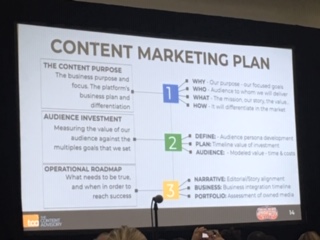Shout It Out
September 28th, 2021 by terriYes, your firm has been successful, workers are highly computer-savvy and for the most part understand social media.
BUT YOU STILL NEED A MARKETING PLAN!
Did you by chance see the movie, “News of the World?” Taking place a few years after the Civil War, the lead character, played by Tom Hanks, makes a living traveling the West, reading newspapers as a public service and performance. (Great film, BTW.) Roughly 150 years ago, the only real source of news was that of local newspapers. And there was a huge percentage of full-fledged Americans who could not read or write. Can you envision living back in those times, and then being beamed up to ” today’s America,” with its digital billboards, people walking the streets texting and tweeting, airplanes with up-to-the-minute video news seen via individual passenger screens… etc., etc.? Communications have come a long way since them thar days.
One mindset that unfortunately is now widespread, is that some companies, successful ones at that, thoroughly believe that because they’re highly computerized and have a good reputation, they can continue moving on by just selling and selling. Believe it or not, these same firms not only may have no marketing plan… many have no overall annual business plan at all. One can only imagine just how more successful these businesses could be, were they to have some semblance of a business/marketing plan.
Let’s talk Marketing 101. Many years ago, I taught this at the college level. Although so much has changed since that time, for the most part, the foundations of a true marketing plan clearly have not. Let’s see if you agree.
1. KNOW YOUR COMPANY.
Be realistic. Are you an industry name? Are you a thought leader? Do you really know your firm’s reputation?
2. KNOW YOUR COMPANY’S FINANCIAL CONDITION.
Know your books; know if you’re really making money. Are you spending money to build your image via some sort of marketing initiatives? Can you afford a small percentage to do so?
3. CONSIDER NEW MARKETING INITIATIVES.
Have you done any marketing communications work in the past, using either traditional or electronic methods? Advertising? Direct mailing? Press programs? Exhibited at key trade expositions? Be honest with yourselves, have these exercises been beneficial?
4. KNOW YOUR COMPETITION.
As a professional businessperson, it’s assumed you know how you’re doing product-to-product or service-to-service with your perceived competitors. What are you doing to promote your brand, your products, your services… that they aren’t? What have they done? What do you have to do to get greater market share and snare accounts from your rivals? (By playing by the most professional rules, of course.) These “war games” can be a lot of fun, by the way, should they ultimately deliver business victories.
5. KNOW ABOUT THE DEMOGRAPHIC YOU’RE TARGETING.
In other words, knowing about those who would be most apropos to consume your product offerings. No matter whether you’re selling B2B or B2C, this is a huge informational nugget you must know all about. Ultimately, this elicits brainstorming sessions on how best to reach them by in many ways, talking their language. What do they respond to? What incentives can be dangled in front of them to get these prospects to ultimately become ongoing customers?
6. DON’T OVER-BUDGET YOUR MARKETING PLANS.
A former business crony of mine used to say, “One must have eggs before having omelets.” We like to recommend to those that are a bit squeamish regarding starting a program, to start off small; to dip their toe in the water. One way to accomplish that is to launch a new marketing program for a six-month window. Clearly, if it’s professionally created and then deployed, you’ll have concrete response indicators after two or three months and be able to gauge how it’s performing.
7. IF YOU EXPECT INSTANT GRATIFICATION, GO TAKE A VACATION.
It’s not always that way. Think about a marketing plan as a professional method of seed-planting. Harvest time will come if this is done correctly. But to expect an epic-sized order three days after you launch your first E-blast is not wise. If your product or service is described well, if you utilize good photos and/or videos in your marketing presentations, the potential of making an indelible impression increases exponentially. Remember, you’re ready to sell, but not all prospects are ready to buy from you… or change from their current providers. Good, professional communications over time, can change this. You must be patient… and realistic. Plant the seeds, watch them grow and then, have a planned response agenda ready to deploy at once.
8. RESPOND IMMEDIATELY TO RESPONDENTS.
Whereas it’s generally an accepted fact that face-to-face is the best way to meet and consummate relationships, the chances of accomplishing that get smaller and smaller as time goes by. However, a well-prepared Email response, made as “personal” as it can be, that is ready to go in a minute upon a request coming in, is recommended. Trying to get a phone meeting or even better, a videoconference after that, is advised. However, the real answer to this is based on your company’s mentality. So, the best advice you can take from this segment, is simply not to take too much time to respond to those showing interest in your offerings.
9. HAVE SALES LITERATURE AVAILABLE BOTH ONLINE 24/7 OR READY TO BE SENT OUT IMMEDIATELY VIA REQUEST. It’s easier, obviously, to do this electronically. But there is a segment of buyers out there that still prefer easy to reference, professionally created brochures and catalogs, as well. Knowing your targets will help you decide on this.
10. MAKE IT STANDARD PROCEDURE TO GET CREDIT REPORTS ON POTENTIAL NEW CUSTOMERS. Nobody will be offended. This is strictly business. And this is 2021.
11. MEET WITH YOUR MARKETING TEAM (WHETHER IT’S YOUR IN-HOUSE GROUP OR AN OUTSIDE SUPPLIER) AND GO OVER THE NEXT SEASON’S PLAN. If you’re pleased, and it is plausible, you may want to increase your marketing budget to stir the pot even more. That’s your decision.











